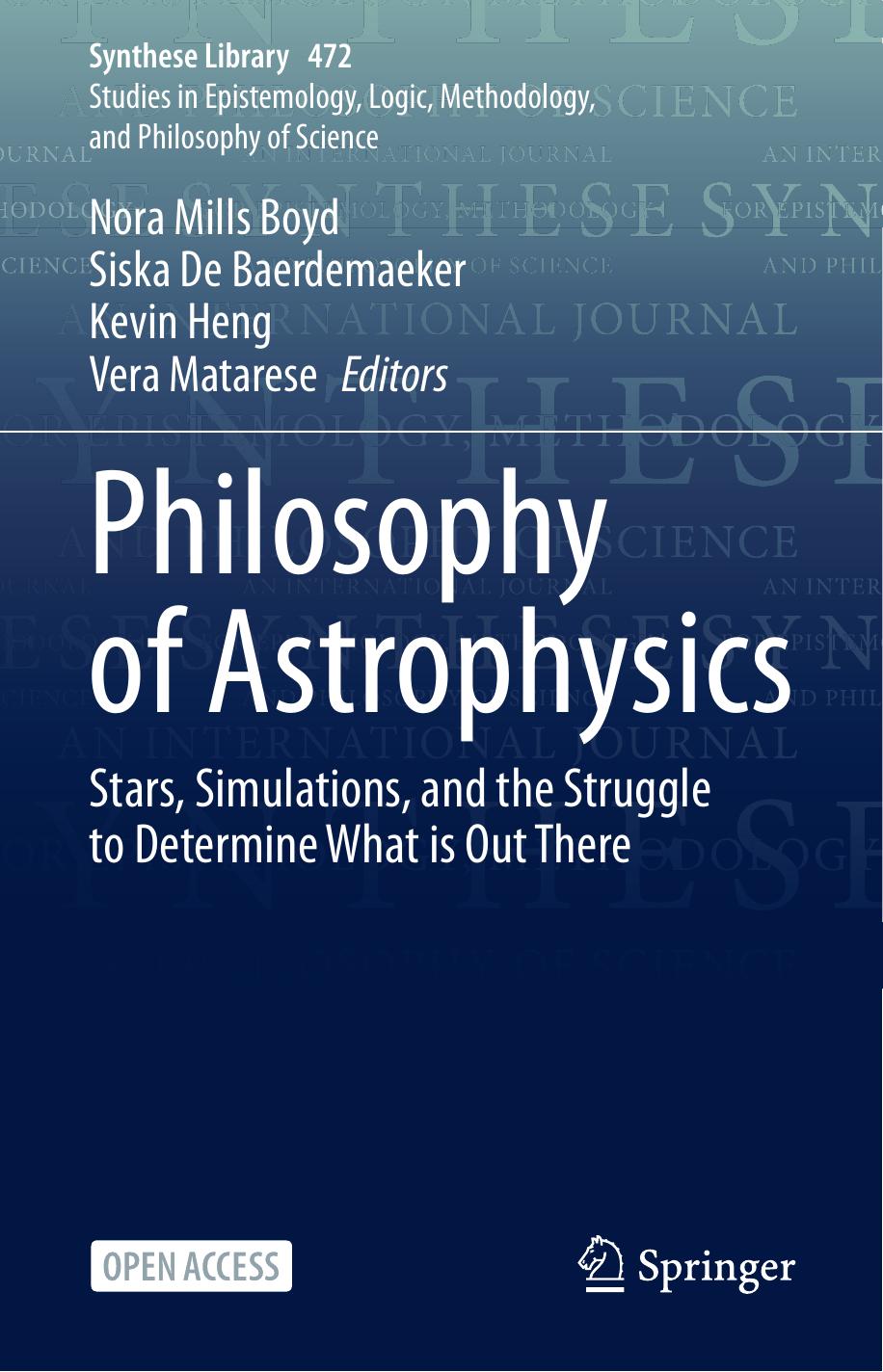Philosophy of Astrophysics by Unknown

Author:Unknown
Language: eng
Format: epub, pdf
ISBN: 9783031266188
Publisher: Springer International Publishing
9.5 Conclusion
In this paper, I have presented a survey of the verification tests used in selected MHD codes, and drawn lessons about simulation justification on the basis of this real-world scientific practice. Notably, the pattern observed does not fit with the V&V frameworkâs prescriptions, and a careful examination of the development and deployment of these tests shows that they serve epistemic functions beyond simply checking for numerical errorsâthey can be used to probe the differences between different code types and come to a deeper understanding of their strengths and weaknesses. By examining the case study of fluid-mixing instability tests, I traced this process in action and showed that the creation of these tests, the subsequent analysis, and the development of improved simulation codes is deeply entangled with our understanding of the underlying physics, not merely the numerics.
On the basis of this survey and case study, I argued that this process of improving our understanding of the target phenomena and the space of simulation code types can be understood to follow a pattern of incremental improvement similar to ordinary scientific theories in ordinary experimental contexts. I also addressed a skeptical objection that might be leveled by those convinced by the strict V&V approachâin particular, given this expanded understanding of how verification tests can inform our investigations, we can be reasonably confident that we are not exposing ourself to any severe underdetermination risks.
This wider understanding of the role of verification tests also has significant implications for how we characterize the role of the simulationistâin particular, the simulationistâs knowledge of simulation methods and techniques is not merely instrumental for the goal of learning about the target phenomenon, because the simulationistâs understanding of the target phenomenon is developed in tandem with their knowledge of simulation methods and techniques. This entanglement suggests that merely reproducing some target phenomenon by simulation is not sufficient for a full understanding of that phenomenonâthe simulationist must also understand the principles by which the different specifics of the various code types yield this common result.
Open Access This chapter is licensed under the terms of the Creative Commons Attribution 4.0 International License (http://âcreativecommons.âorg/âlicenses/âby/â4.â0/â), which permits use, sharing, adaptation, distribution and reproduction in any medium or format, as long as you give appropriate credit to the original author(s) and the source, provide a link to the Creative Commons license and indicate if changes were made.
The images or other third party material in this chapter are included in the chapter's Creative Commons license, unless indicated otherwise in a credit line to the material. If material is not included in the chapter's Creative Commons license and your intended use is not permitted by statutory regulation or exceeds the permitted use, you will need to obtain permission directly from the copyright holder.
Download
This site does not store any files on its server. We only index and link to content provided by other sites. Please contact the content providers to delete copyright contents if any and email us, we'll remove relevant links or contents immediately.
Bad Pharma by Ben Goldacre(3355)
How To by Randall Munroe(3034)
The Book of Numbers by Peter Bentley(2912)
Aliens by Jim Al-Khalili(2787)
A Short History of Nearly Everything by Bryson Bill(2629)
The Meaning of it All by Richard Feynman(2300)
Bill Bryson by A short history of nearly everything(1679)
A Short History of Nearly Everything: Special Illustrated Edition by Bill Bryson(1634)
Elephants on Acid by Boese Alex(1567)
Six Easy Pieces by Richard P. Feynman(1491)
Everything in Its Place by Oliver Sacks(1445)
The Meaning Of It All by Richard P. Feynman(1423)
Glukhovsky, Dmitry - Metro 2033 by Glukhovsky Dmitry(1312)
Bad Science by Ben Goldacre(1297)
When Einstein Walked with Gödel by Jim Holt(1269)
One Two Three ... Infinity: Facts and Speculations of Science by George Gamow(1219)
The American Scene by Henry James(1214)
Leviathan Wakes by James S.A. Corey(1191)
A SHORT HISTORY OF NEARLY EVERYTHING by bryson bill(1186)
